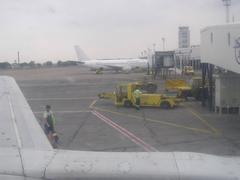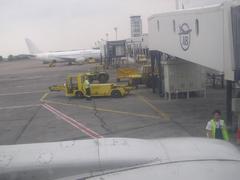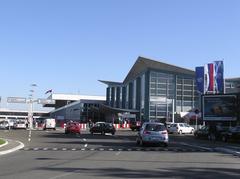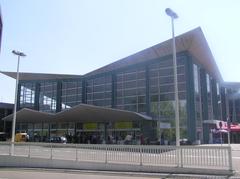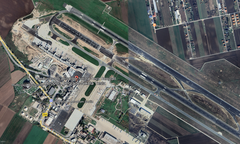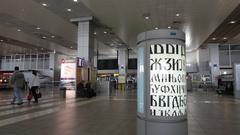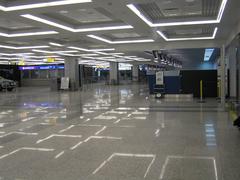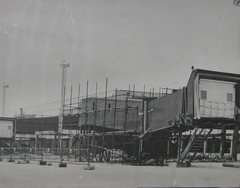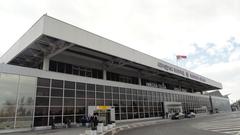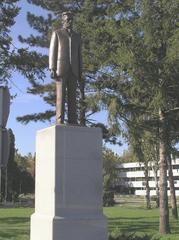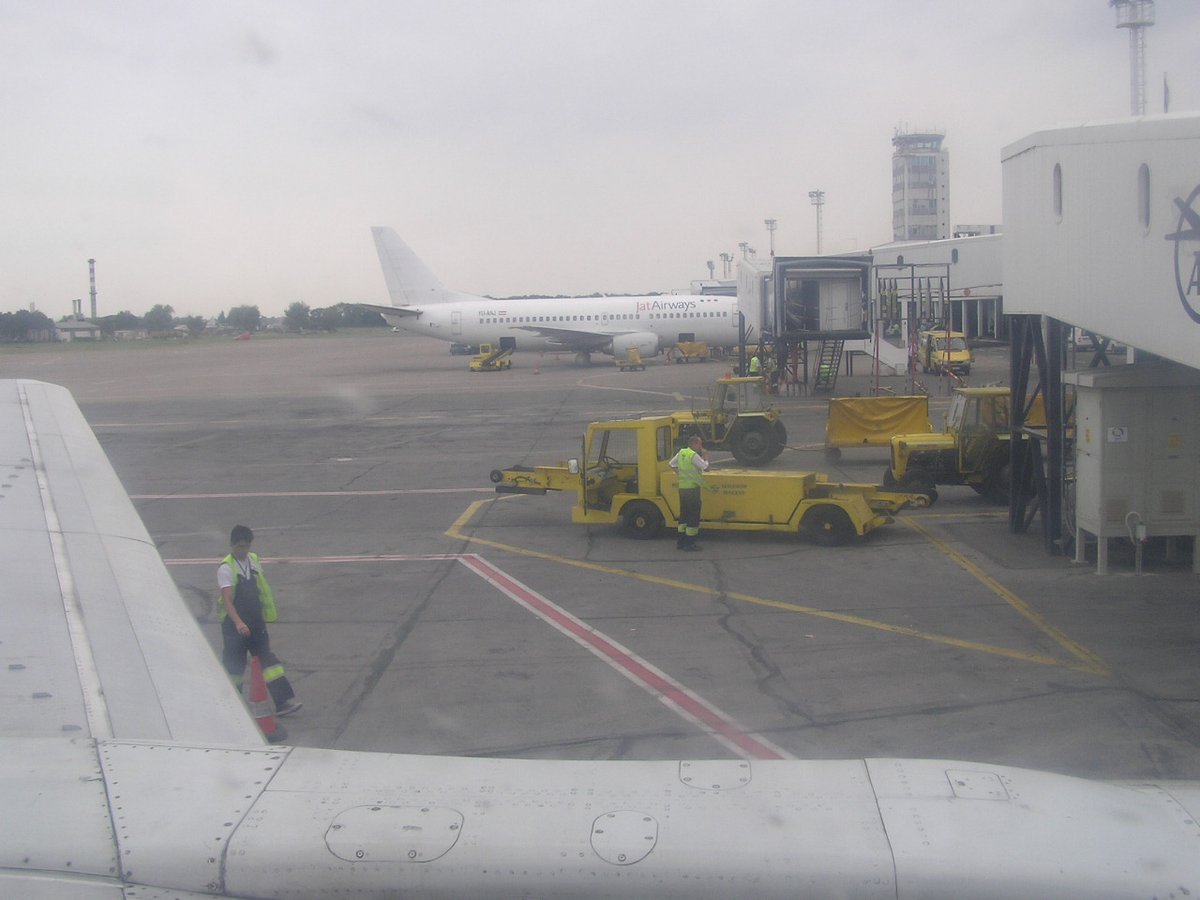
Belgrade Nikola Tesla Airport: Visiting Hours, Tickets, and Travel Guide
Date: 14/06/2025
Introduction
Belgrade Nikola Tesla Airport (IATA: BEG) is Serbia’s largest and busiest international airport, serving as the primary gateway to Belgrade and the broader Balkan region. Strategically located about 18 km west of central Belgrade, near Surčin, it connects travelers to over 110 global destinations and is a hub for major airlines, including Air Serbia, Wizz Air, Lufthansa, and Qatar Airways. Since its opening in 1962, the airport has undergone significant modernization and expansion, with VINCI Airports managing operations since 2018 under a 25-year concession. In 2024, it served a record 8.4 million passengers, underscoring its role as a major regional hub (beg.aero; shunhotel.com; scopetrip.com).
Named after the famed Serbian-American inventor Nikola Tesla in 2006, the airport is not just a transit point but also a symbol of Serbia’s scientific heritage and cultural pride. With modern terminals, comprehensive passenger amenities, and excellent transport links, Belgrade Nikola Tesla Airport ensures a comfortable and efficient travel experience. This guide provides detailed information on visiting hours, ticketing, transportation options—including free public buses from January 2025—and practical tips for navigating both the airport and the city.
Contents
- Introduction
- Historical Development of Belgrade Nikola Tesla Airport
- Architectural Features and Facilities
- Visiting Hours and Ticketing Information
- Transportation and Access
- Nearby Historical Sites and Attractions in Belgrade
- Safety and Practical Tips for Travelers
- FAQ
- Conclusion
- Sources
Historical Development of Belgrade Nikola Tesla Airport
Early Foundations and Strategic Location
The current airport site, opened in 1962, replaced the older Dojno Polje airport to accommodate increasing air traffic as Belgrade grew in importance. Its location west of the city places it at a strategic crossroads between Eastern and Western Europe (beg.aero).
Naming and Tribute to Nikola Tesla
In 2006, the airport was renamed to honor Nikola Tesla, the Serbian-American inventor whose contributions to science and technology are celebrated worldwide. This renaming reflects Serbia’s cultural pride and commitment to progress (shunhotel.com).
Expansion, Modernization, and International Partnerships
Key expansion projects—such as Terminal 2’s construction in the 1970s, runway upgrades to CAT IIIb standards, and a new air traffic control center in 2010—have kept the airport at the forefront of regional air travel. The facility has been managed by VINCI Airports since 2018, resulting in further modernization and capacity enhancements (beg.aero).
Passenger Growth and Regional Significance
With over 8 million passengers in 2024, Belgrade Nikola Tesla Airport has solidified its place as a key Balkan aviation hub, offering extensive connections and integrating seamlessly with road and public transport networks (worldtravelguide.net; scopetrip.com).
Architectural Features and Facilities
Terminal Layout and Capacity
The airport comprises two main terminals within a single connected building:
- Terminal 1: Serves low-cost and charter flights.
- Terminal 2: Handles international flights and is the main hub for Air Serbia.
Recent renovations have expanded the overall area to about 44,000 m², accommodating an annual passenger volume that now exceeds its original 5-million design capacity (sleepinginairports.net).
Modernization and Passenger Experience
Upgrades include expanded waiting areas, improved baggage handling, and enhanced security. Travelers have access to business lounges, duty-free shops, cafes, currency exchange, free Wi-Fi, and support for reduced-mobility passengers (flyairports.com; worldtravelguide.net).
Art and Cultural Displays
Serbian art and cultural exhibits are prominently displayed in the terminals, providing an introduction to the country’s heritage (sleepinginairports.net).
Visiting Hours and Ticketing Information
Visiting Hours
Belgrade Nikola Tesla Airport operates 24/7. While flight operations are continuous, specific facilities (shops, lounges, dining) generally open from early morning to late evening. For up-to-date details, consult the airport’s official website.
Tickets and Entry Fees
There is no fee to enter the airport or public areas of the terminals. Travelers must have valid flight tickets and identification for check-in and security. Non-passengers accompanying travelers can access public spaces free of charge.
Transportation and Access
By Car/Taxi
Reachable from central Belgrade in about 30 minutes via the E75 motorway. Official taxis use a voucher system to ensure fixed pricing (RSD 2,300–3,000 / €20–25) (worldtravelguide.net; belgradecard.rs).
By Public Bus
Multiple bus lines connect the airport to the city center. From January 2025, public bus transport to and from the airport is free for passengers, making the connection even more convenient (belgradecard.rs).
Nearby Historical Sites and Attractions in Belgrade
Take advantage of a layover or extend your visit to explore:
- Kalemegdan Fortress: Overlooking the confluence of the Sava and Danube rivers.
- St. Sava Temple: One of the world’s largest Orthodox churches.
- Knez Mihailova Street: A lively pedestrian area for shopping and dining.
- Museum of Yugoslavia: Focused on the region’s modern history.
These sites are easily accessible from the airport by taxi or public transport (shunhotel.com; tob.rs).
Safety and Practical Tips for Travelers
- General Safety: The airport and city are generally safe, but remain vigilant, especially against pickpocketing.
- Transport: Only use official taxi and bus services to avoid scams.
- Currency: Use Serbian dinars (RSD); ATMs and exchange offices are available.
- Water: Tap water is safe to drink.
- Preparation: Arrive early, check baggage policies, and consider downloading the airport app or using travel apps such as Audiala for live updates (africanjacana.com; scopetrip.com).
Frequently Asked Questions (FAQ)
Q: What are the airport’s visiting hours?
A: The airport operates 24/7. Facilities like shops and lounges have varying hours.
Q: Are there entry fees to access the airport?
A: No, entry is free. Only flight ticket and ID required for check-in and security.
Q: How do I get to the city center?
A: Official taxis (fixed fares), public buses (free as of January 2025), and private transfers are available.
Q: Does the airport provide accessibility services?
A: Yes. Ramps, elevators, and assistance for reduced-mobility travelers are provided.
Q: What attractions are near the airport?
A: Kalemegdan Fortress, St. Sava Temple, Knez Mihailova Street, and the Museum of Yugoslavia.
Conclusion
Belgrade Nikola Tesla Airport is a modern, efficient, and culturally rich entry point to Serbia and the Balkans. Its continuous expansion, comprehensive amenities, and easy transport links make it a favorable choice for both transit and destination travelers. With nearby historical attractions and a commitment to traveler comfort, the airport offers an excellent start to your Serbian adventure. For up-to-date information, download the official Belgrade Nikola Tesla Airport app or refer to the resources below.
Sources
- Belgrade Nikola Tesla Airport: Visiting Hours, Tickets, and Travel Guide to Serbia’s Major Gateway, 2025, beg.aero
- Belgrade Nikola Tesla Airport information, 2025, shunhotel.com
- Belgrade Nikola Tesla Airport Overview, 2025, scopetrip.com
- Belgrade Nikola Tesla Airport Guide, 2025, worldtravelguide.net
- Belgrade Nikola Tesla Airport Facilities and Terminal Information, 2025, flyairports.com
- Transportation to and from Belgrade Nikola Tesla Airport, 2025, belgradecard.rs
